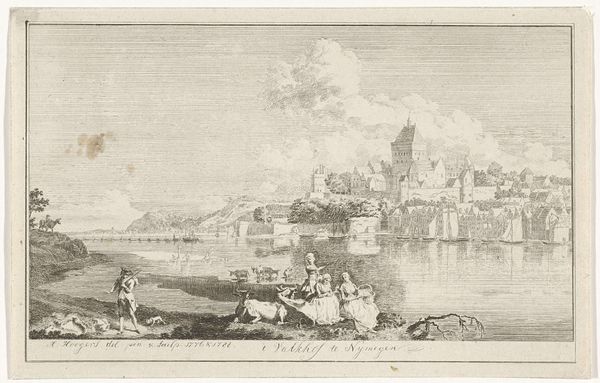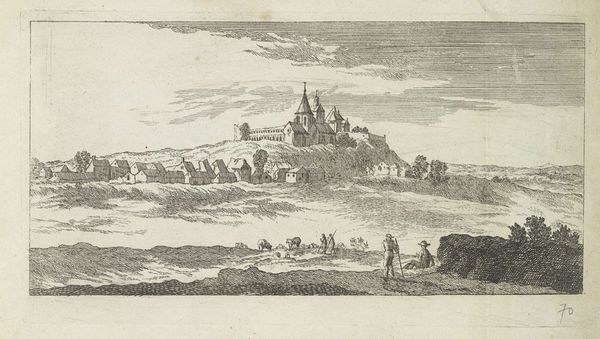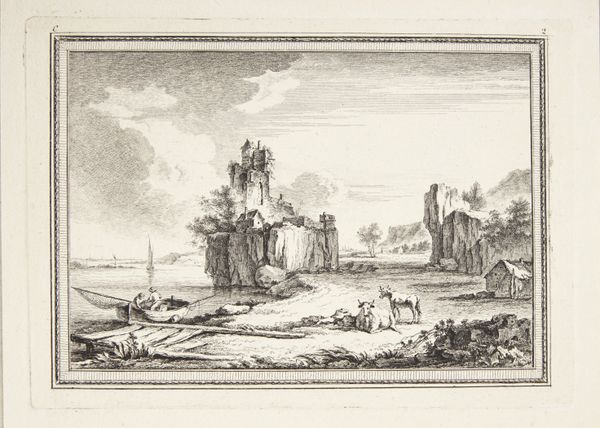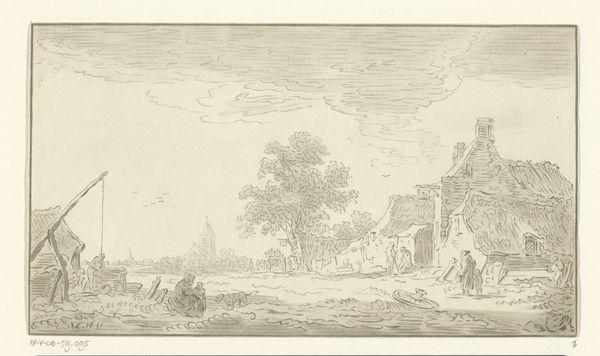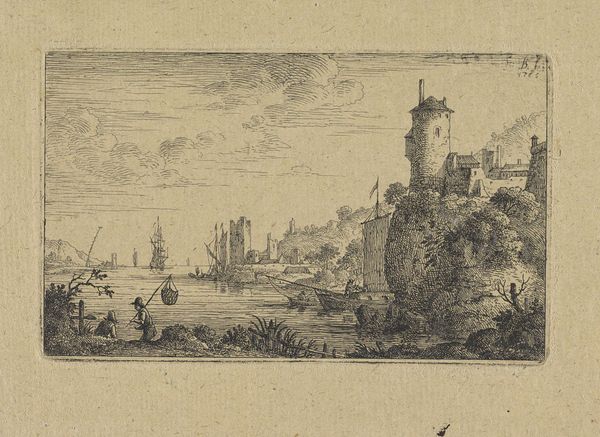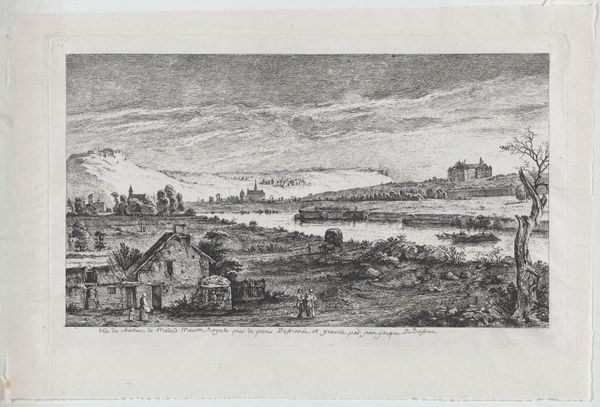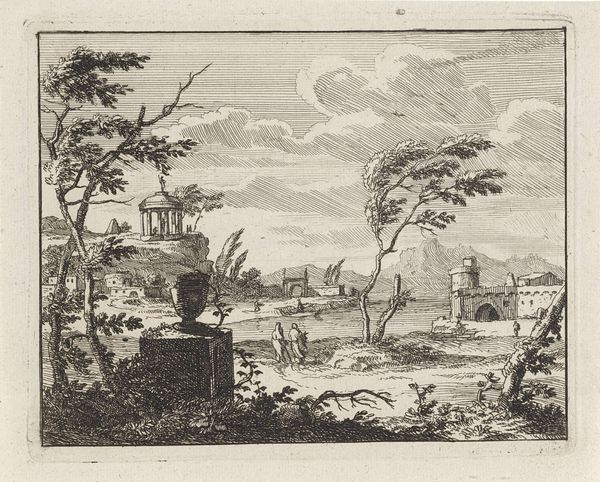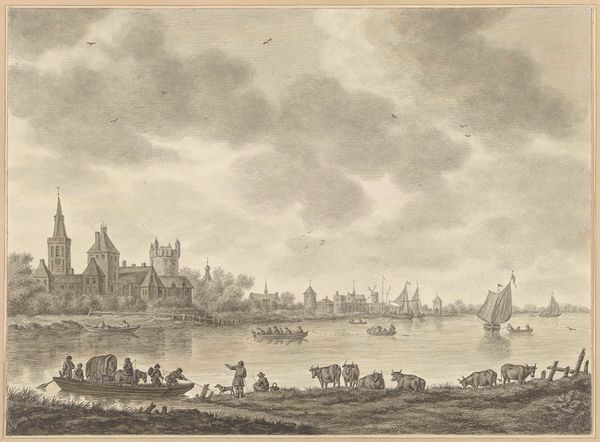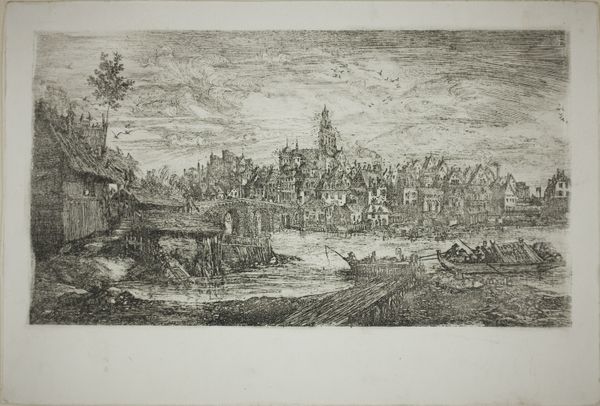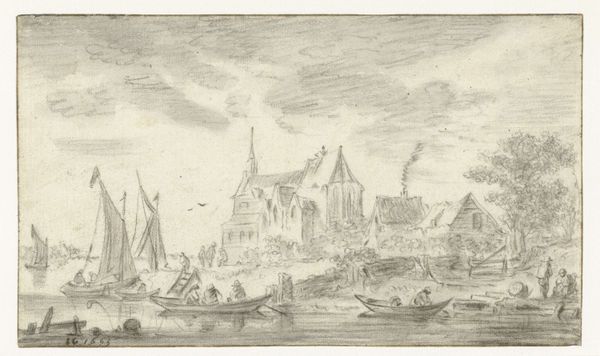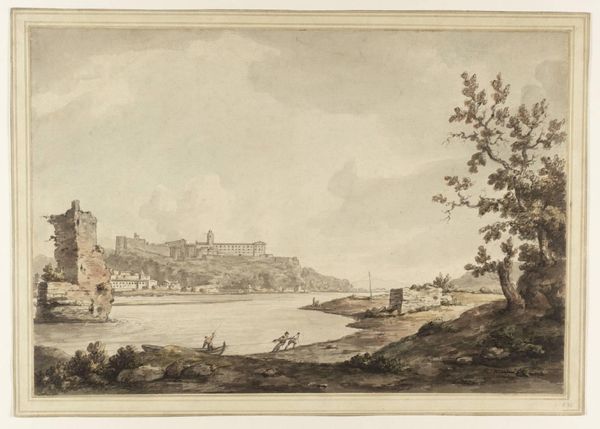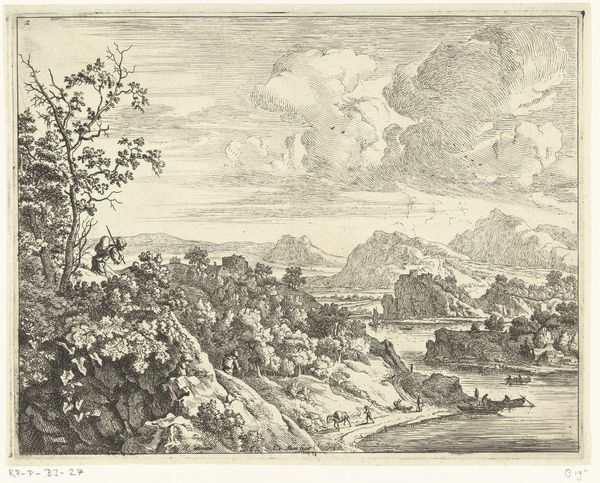
Dimensions: height 124 mm, width 194 mm
Copyright: Rijks Museum: Open Domain
Curator: Look at this lovely print: "View of the Valkhof at Nijmegen," made between 1776 and 1788, etched and engraved. You notice immediately the delicate textures? Editor: Yes, the etching gives it such a detailed, almost photographic quality despite the age, the print evokes a sense of peace and serenity. But, to me, there is something oddly romantic and dramatic about the scene given the decay of the landscape. Curator: It's the contrast, perhaps? Consider the context: etchings and engravings at this time served an important function for spreading visual information about particular places, acting almost as a precursor to the widespread use of photography we see today. The scale of its reproduction is what captures me. Editor: True, I find it interesting how the artist presents a specific view of this location in Nijmegen, almost glorifying a Dutch golden age—especially knowing it hangs today at the Rijksmuseum, the political context really shapes how one perceives landscape art. Curator: What I am also fascinated by is how the materiality would have been perceived during its production and sale, but even its later appreciation on display in the white cube. Were these landscapes thought of as simple decorative items sold by merchants or displayed at the academy, or high art commodities? How are these landscapes mobilized in the present-day Rijksmuseum shop? Editor: Good point, understanding who the target audience was and what role this imagery played in shaping national identity is very informative. Considering the perspective is from the opposite bank of the river Waal, maybe even constructed—a choice highlighting the historical significance of the Valkhof as a former imperial palace and seat of power. Curator: And yet, while it's undeniably informative and of high craft, the engraving's limitations would have made for unique social experience of encountering landscapes versus reality—you cannot simply escape the artist's studio labor in this etching. Editor: Fascinating how those material constraints in the labor actually helped shape the reception of Dutch heritage. Curator: Indeed, lots of labor to unpack here about this piece, its location, the social politics, but its process, too! Editor: Agreed! We often think of landscape as a window, but we forget the frame around the glass itself.
Comments
No comments
Be the first to comment and join the conversation on the ultimate creative platform.
